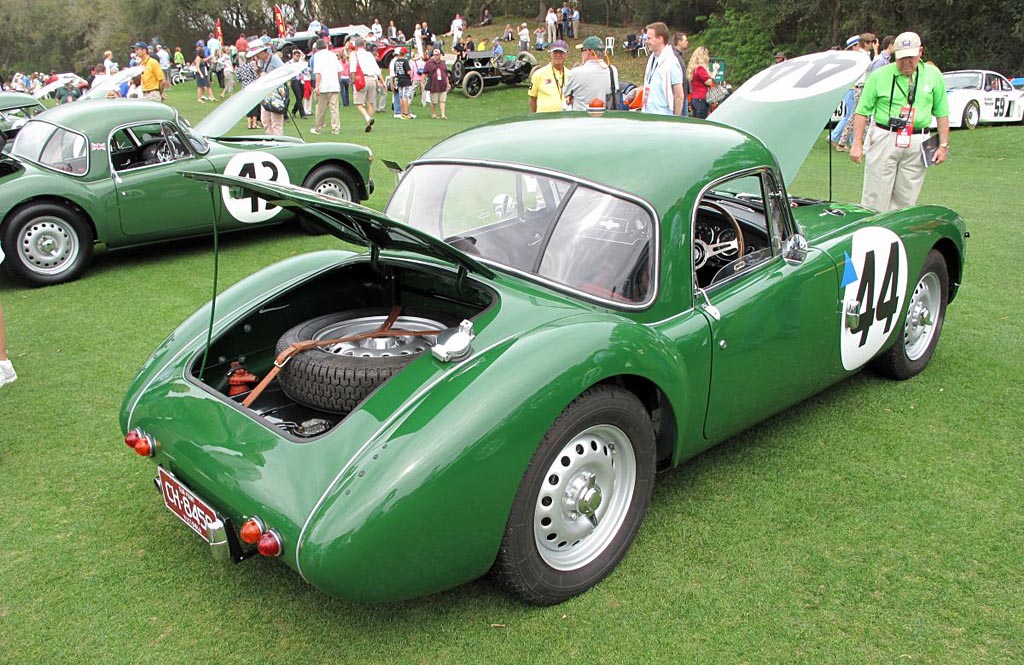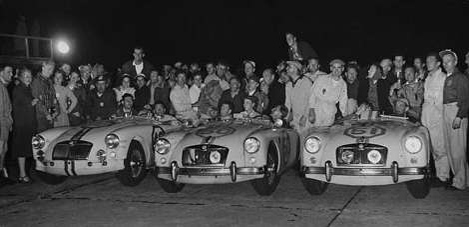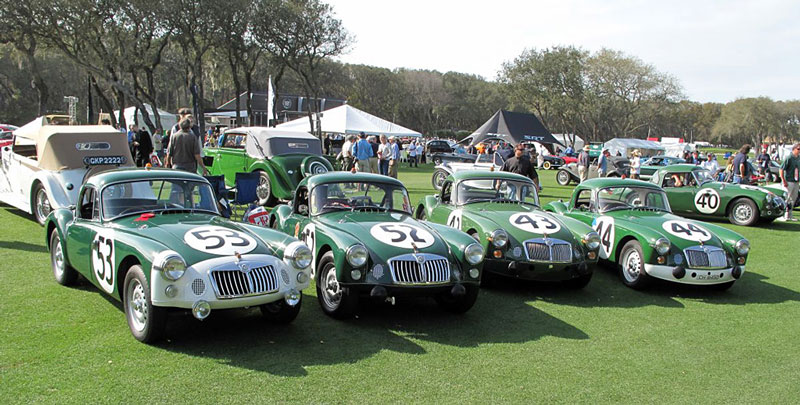REPRINT
FROM DRIVE .COM 2006 written by David
Morley
Ian
Prior's rare little racer is back on track
after an enforced early retirement.
1961 MGA Sebring
No race car
gets an easy life, but Ian Prior's MGA Sebring's
fortunes took a turn for the worse after it was
decommissioned from competitive motor sport.
Several seasons
competing at the highest level in the US
couldn't kill the little Brit, but neglectful
owners and inexperienced tradesmen almost did.
You suspect
that had Mr Prior's car been less historically
significant (see sidebar) it would have been
scrapped long ago. Or at least left to the rust
gods.
As it is,
though, the Brooklands green MGA hardtop has a
rich competition history and still sees active
duty on the track at historic race meetings.
This car makes
"rare" a relative term. MGAs aren't exactly
thick on the ground and the hardtop version is
even more scarce. The twin-cam version is harder
to find again and then there's Mr Prior's car:
one of just two factory MG works cars built in
1961 to contest world sports car championship
races at the Sebring racetrack in the US.
The Sebring
cars used the older but more reliable pushrod
engine and a range of changes aimed at making
them viable long-distance race cars.
The boot, for
instance, is almost taken up by the fuel tank
and the interior consists of lightweight seats
and little else. Even the firewall is split to
allow the gearbox to be removed without
dismantling the steering.
Quaint touches
include a light to illuminate the racing number
(about a third of the Sebring 12-hour race was
run after dark) and a lamp on the roof that
would be switched on by the driver to warn the
crew one lap before he pitted.
Mr Prior's
association with the car goes back to 1977 when
he and his wife were holidaying in the US,
visiting like-minded MG enthusiasts along the
way.
In Florida, an
MG fan took him along to see an MG Y-Type
special that was being built. "And this," says
Mr Prior, pointing at the Sebring, "was sitting
at a panel beater's next door."
The car was so
dilapidated that a mere $US500 changed hands.
"It had been
sitting outside in the Florida humidity and heat
for nine years," he explains. "The owner's
girlfriend had stacked it . . . the front was
completely pushed in. It was full of rust, too.
"But," Mr Prior
says, "it was mostly complete and even the rare
limited-slip diff and all the race gear was
still intact."
He planned to
have the car running within a year. The project
took 212 decades longer.
"The body was
in a bad way, but the first panel beater who
tried to fix it ended up just making things
worse."
Mr
Prior more or less lost interest
in the project and the MGA sat
for another 10 years. He
eventually tried another panel
beater, but was not happy with
the result. Most people would
have given up at that point, but
about three years ago he decided
it was time to see if third time
really was lucky. It was.
"I
found a guy who was just
starting out in his own panel
business and he assured me he
could get the car right. He did,
too."
From there, the process became a
jigsaw puzzle with Mr Prior
dropping in a modified engine
and finishing off a truly
remarkable car. And story.
Except it doesn't end there.
About four years ago, he got a
whiff that one of the original
engines (there were only three)
for the Sebring model had turned
up, again in Florida. "Two days
later, I'd done the deal and it
was on its way.
"Now the plan is to do that up
and get it working and take the
car back to an even more
original condition."
Autobiography
Ian's car is one of two
specially built MGA hardtops
prepared by BMC's race workshop
specifically for the 1961
Sebring 12-hour race.
Using twin-cam chassis and
pushrod motors, the two cars
were also lightened, fitted with
extra lights, modified
electrical systems, bigger fuel
tanks, four-wheel disc brakes,
adjustable dampers and extensive
lock-wiring and other detail
touches.
The two cars were built over a
two-week period by various
mechanics and differed slightly
from each other.
The Sebring race was part of the
World Sports Car Championship
and the two MGs finished first
and second in their class (Mr
Prior's was the winner).
BMC disposed of the cars after
the race, and car 44 - this one
- was eventually sold to a radio
DJ who used it as both his road
car and weekend racer.
It
changed hands a few more times,
each time to a weekend race
driver until it fell into the
hands of a man named Richard
Robson jnr.
Robson competed in the car until
1965 when the MGA became
uncompetitive and he switched to
an E-Type Jaguar. It was
Robson's girlfriend who smashed
the car.
The sister car (number 43) also
has been found and restored and
is now in New Jersey.



